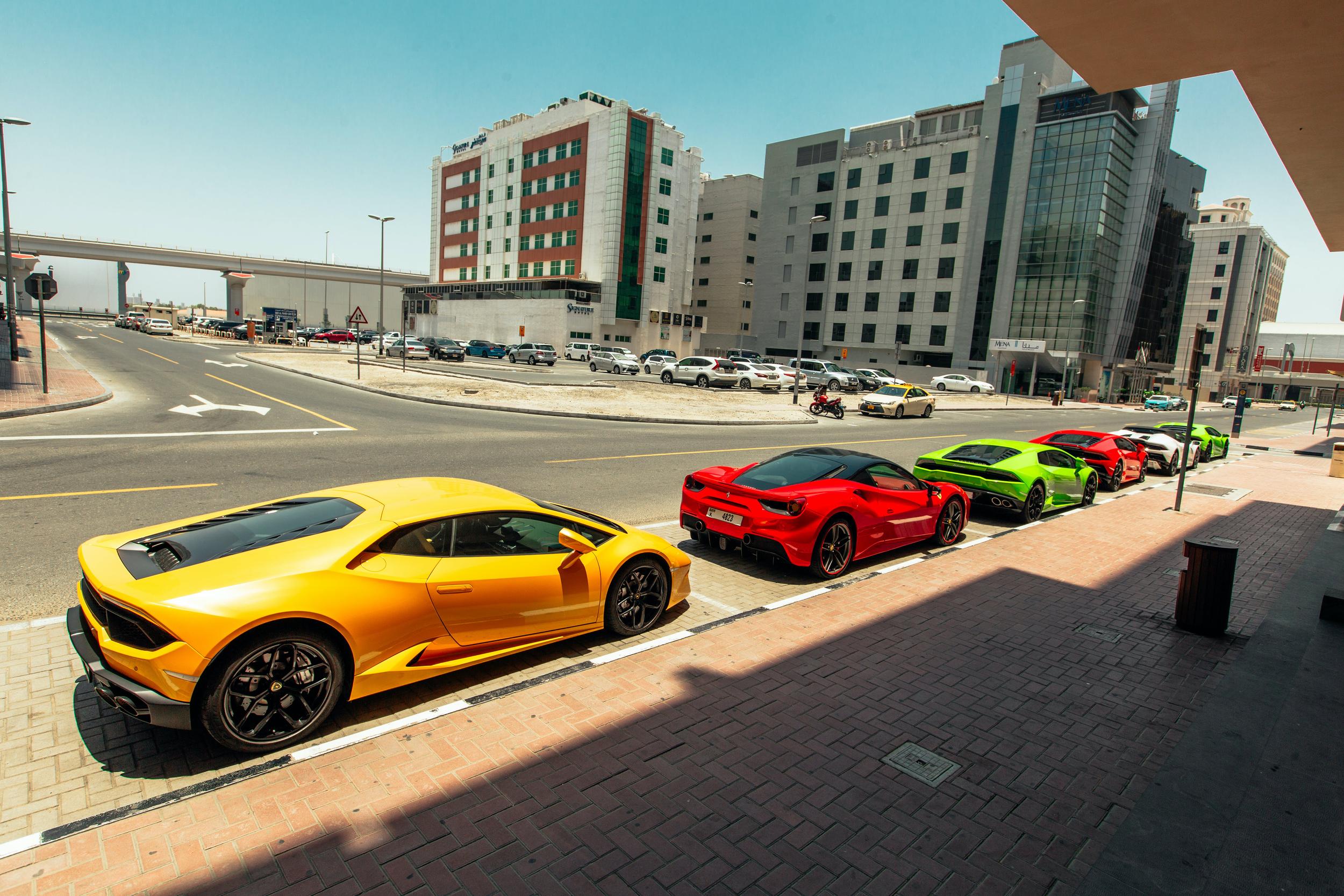Lamborghini has long been a byword for high-speed, luxury supercars. Yet, the automotive world is replete with examples of innovation and performance that compete with, and occasionally outpace, Lamborghini’s venerable models. This exploration of such cars is not just about raw speed but also encompasses heritage, design, and the unique attributes that make them worthy contenders or even leaders in their class.
Ferrari SF90 Stradale vs. Lamborghini Aventador SVJ
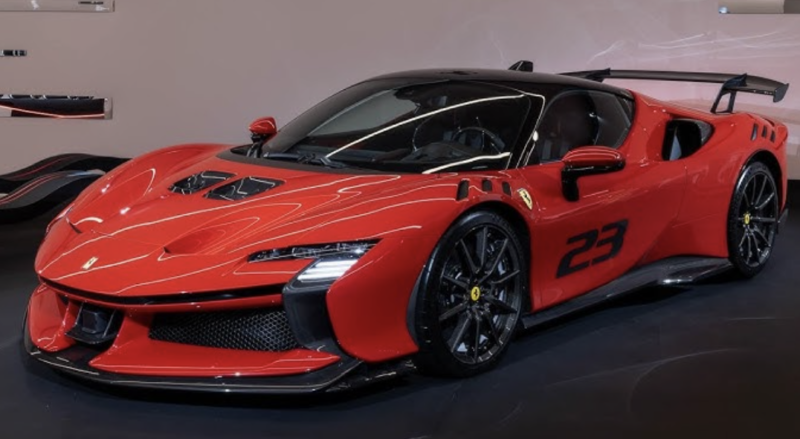
The SF90 Stradale represents a significant leap forward for Ferrari, signaling their entry into the hybrid supercar segment. This car’s heart is a 4.0L V8 engine, assisted by three electric motors, culminating in a prodigious 986 horsepower output. Such figures do not merely rival but in fact surpass the Lamborghini Aventador SVJ’s 759 hp from its naturally aspirated 6.5L V12. This remarkable power enables the SF90 Stradale to surge from 0 to 60 mph in just 2.5 seconds, eclipsing the Aventador SVJ’s already blistering performance.
The SF90 Stradale’s hybrid system isn’t just about raw power; it’s a clear sign of Ferrari’s commitment to melding high performance with environmental sustainability. The inclusion of electric motors allows for quieter, emission-free driving at lower speeds, adding a layer of versatility unseen in most high-performance vehicles. The car’s interior and technological advancements, including a new digital cockpit and touch-sensitive controls, signal a futuristic approach while maintaining Ferrari’s legendary driving experience.
The SF90 Stradale’s introduction is an evolution of Ferrari’s long-standing tradition of incorporating cutting-edge technology into road cars, a practice honed in their Formula 1 program. This vehicle is more than just a car; it’s a statement about where Ferrari sees the future of high-performance motoring, blending their racing DNA with new, eco-friendly technology.
| Specification | Ferrari SF90 Stradale |
|---|---|
| Engine | 4.0-liter Twin-Turbo V8 |
| Electric Motors | Three Electric Motors |
| Total Power Output | 986 hp (Combustion Engine) + 217 hp (Electric Motors) = 1,203 hp (Combined) |
| Torque | 590 lb-ft (Combustion Engine) + Additional Electric Torque |
| Transmission | 8-speed Dual-Clutch Automatic |
| 0-60 mph | Approx. 2.5 seconds |
| Top Speed | Over 211 mph |
| Electric-Only Range | Up to 15 miles (Approx.) |
| Drivetrain | All-Wheel Drive (AWD) |
Porsche Taycan Turbo S vs. Lamborghini Huracán EVO
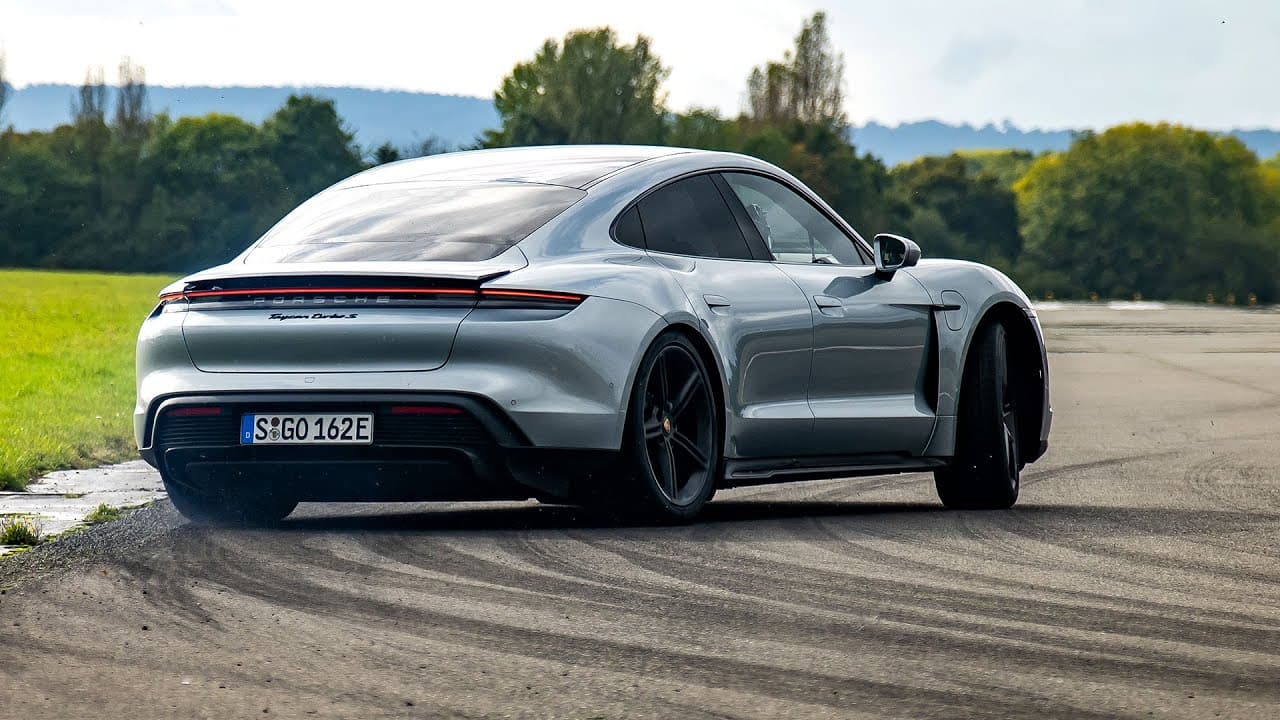
Lamborghini’s Huracán EVO, with its 631 hp V10 engine, is undeniably a pinnacle of traditional supercar performance. However, Porsche’s foray into the EV sector with the Taycan Turbo S sets a new paradigm. The Taycan, delivering up to 751 hp with its electric powertrain, achieves 0 to 60 mph in an estimated 2.6 seconds. This not only brings it into direct competition with the Huracán EVO but does so with a completely different technological approach.
The Taycan Turbo S stands out with its innovative 800-volt architecture, allowing for rapid charging and reduced heat build-up. Its performance is complemented by a luxurious interior and cutting-edge infotainment system, catering to those who seek both exhilarating performance and daily drivability. The Taycan’s regenerative braking system and quiet operation redefine the sports car experience, providing a blend of speed and serenity.
The introduction of the Taycan marks a significant milestone for Porsche, an iconic brand traditionally known for high-performance combustion engines. This move illustrates Porsche’s adaptation and commitment to an electric future, balancing their rich heritage with the demands of modern mobility and environmental consciousness.
| Specification | Porsche Taycan Turbo S |
|---|---|
| Electric Motor | Dual Permanent Magnet Synchronous Motors |
| Total Power Output | 750 hp (616 kW) |
| Torque | 774 lb-ft (1,050 Nm) |
| Transmission | 2-speed Automatic |
| All-Wheel Drive (AWD) | Yes |
| 0-60 mph | Approx. 2.6 seconds |
| Top Speed | Approx. 161 mph |
| Electric Range | Up to 220 miles (EPA) |
| Battery Capacity | 93.4 kWh |
| Charging Time (DC Fast Charger) | Approx. 22.5 minutes (0-80% SOC) |
| Charging Time (Level 2 Charger) | Approx. 9 hours (0-100% SOC) |
McLaren 720S vs. Lamborghini Huracán Performante
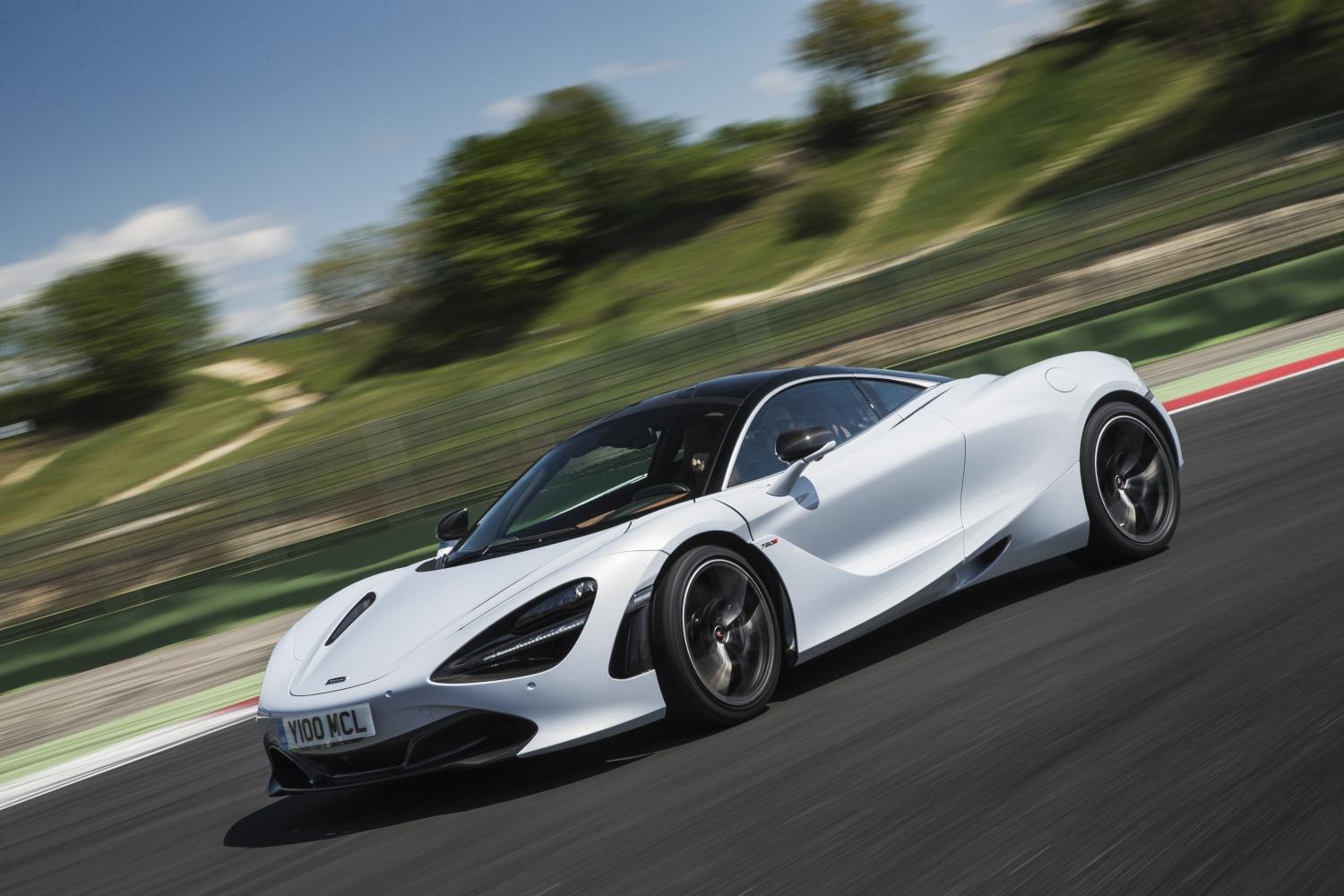
The McLaren 720S, a marvel from the British manufacturer’s Super Series, brings a level of technical sophistication and performance that challenges the Huracán Performante. Its 4.0L twin-turbocharged V8 engine churns out 710 hp. Combined with McLaren’s relentless focus on aerodynamics and lightness, the 720S not only competes with but in many ways, enhances the supercar driving experience. It boasts a 0 to 60 mph time of just 2.7 seconds, rivaling the Performante, while offering a distinctively smooth and refined ride, even at higher speeds.
The 720S’s design philosophy centers on blending aerodynamic efficiency with artistic design. Its iconic dihedral doors and teardrop-shaped cockpit are not just visually stunning but also functionally beneficial, channeling air to cool the engine and increase downforce. The interior combines luxury with purpose, featuring high-quality materials and a driver-centric layout, emphasizing McLaren’s philosophy of form following function.
McLaren’s engineering approach, deeply rooted in their Formula 1 expertise, emphasizes innovative use of materials like carbon fiber and advanced aerodynamics. The 720S is a culmination of this approach, showing how racetrack technology and knowledge can translate into a road car that offers a tantalizing blend of performance, comfort, and daily usability.
| Specification | McLaren 720S |
|---|---|
| Engine | 4.0-liter Twin-Turbo V8 |
| Horsepower | 710 hp |
| Torque | 568 lb-ft |
| Transmission | 7-speed Dual-Clutch Automatic |
| 0-60 mph | Approx. 2.7 seconds |
| Top Speed | Approx. 212 mph |
| Drivetrain | Rear-Wheel Drive |
| Curb Weight | Around 3,128 lbs |
| Fuel Type | Gasoline |
Aston Martin DBS Superleggera vs. Lamborghini Aventador

Facing off against the Aventador, Aston Martin’s DBS Superleggera presents a compelling British take on the super-GT concept. Powered by a 5.2L twin-turbo V12 engine, the Superleggera delivers 715 hp, propelling it from 0 to 60 mph in just 3.4 seconds. While slightly trailing the Aventador in outright acceleration, the DBS Superleggera excels in grand touring capabilities, offering a sublime blend of performance, comfort, and luxury. Its usage of carbon fiber extensively throughout the body reduces weight, enhancing both agility and fuel efficiency.
The Superleggera’s design philosophy exudes elegance and power, with its sculpted lines and assertive stance. Inside, the car is a sanctuary of luxury, featuring the finest materials and craftsmanship, typical of Aston Martin’s attention to detail. The car’s dynamic abilities are equally impressive, with a chassis tuned for both high-speed stability and cornering prowess, making it as enjoyable on a cross-country tour as it is on the racetrack.
The DBS Superleggera is not just a car; it’s a continuation of Aston Martin’s storied legacy in creating some of the most desirable cars in the world. It stands as a testament to the brand’s commitment to hand-built quality, bespoke luxury, and a driving experience that is both exhilarating and refined. The DBS Superleggera represents a harmonious fusion of traditional British luxury car-making with modern performance engineering.
| Specification | Aston Martin DBS Superleggera |
|---|---|
| Engine | 5.2-liter Twin-Turbo V12 |
| Horsepower | 715 hp |
| Torque | 664 lb-ft |
| Transmission | 8-speed Automatic |
| 0-60 mph | Approx. 3.4 seconds |
| Top Speed | Approx. 211 mph |
| Drivetrain | Rear-Wheel Drive |
| Curb Weight | Around 3,732 lbs |
| Fuel Type | Gasoline |
Audi RS e-tron GT vs. Lamborghini Urus

The Audi RS e-tron GT stands as a beacon of Audi’s innovation in the electric vehicle (EV) sector, offering a direct challenge to high-performance luxury SUVs like the Lamborghini Urus. The RS e-tron GT, powered by two electric motors, delivers up to 637 horsepower in its overboost mode. While its power output might seem modest compared to the Urus’s 641 horsepower, the electric powertrain provides instantaneous torque, resulting in a 0 to 60 mph acceleration time of just 3.1 seconds, on par with the Urus.
The appeal of the RS e-tron GT extends beyond just its performance. Audi has infused this car with a sophisticated air suspension system, all-wheel steering, and regenerative braking, which contribute to its dynamic handling and exceptional ride comfort. The car’s design, characterized by bold lines and a futuristic aesthetic, speaks to its advanced nature. Inside, the cabin combines luxury and technology, with sustainable materials highlighting Audi’s commitment to environmental responsibility.
The RS e-tron GT is more than just an answer to the conventional luxury performance car; it’s a glimpse into the future of automotive design and technology. It embodies Audi’s vision for high-performance EVs and marks a significant step in the brand’s journey towards electrification. Audi’s approach with the RS e-tron GT challenges the notion that high performance and environmental stewardship are mutually exclusive, offering a compelling, sustainable alternative in the luxury car market.
| Specification | Audi RS e-tron GT |
|---|---|
| Electric Motors | Dual Electric Motors |
| Total Power Output | 590 hp (637 hp in overboost) |
| Torque | 612 lb-ft (830 Nm) |
| Transmission | 2-speed Automatic |
| All-Wheel Drive (AWD) | Yes |
| 0-60 mph | Approx. 3.1 seconds |
| Top Speed | Approx. 155 mph |
| Electric Range (EPA) | Up to 232 miles |
| Battery Capacity | 93 kWh |
| DC Fast Charging | Up to 270 kW |
Mercedes-AMG GT 63 S vs. Lamborghini Huracán STO
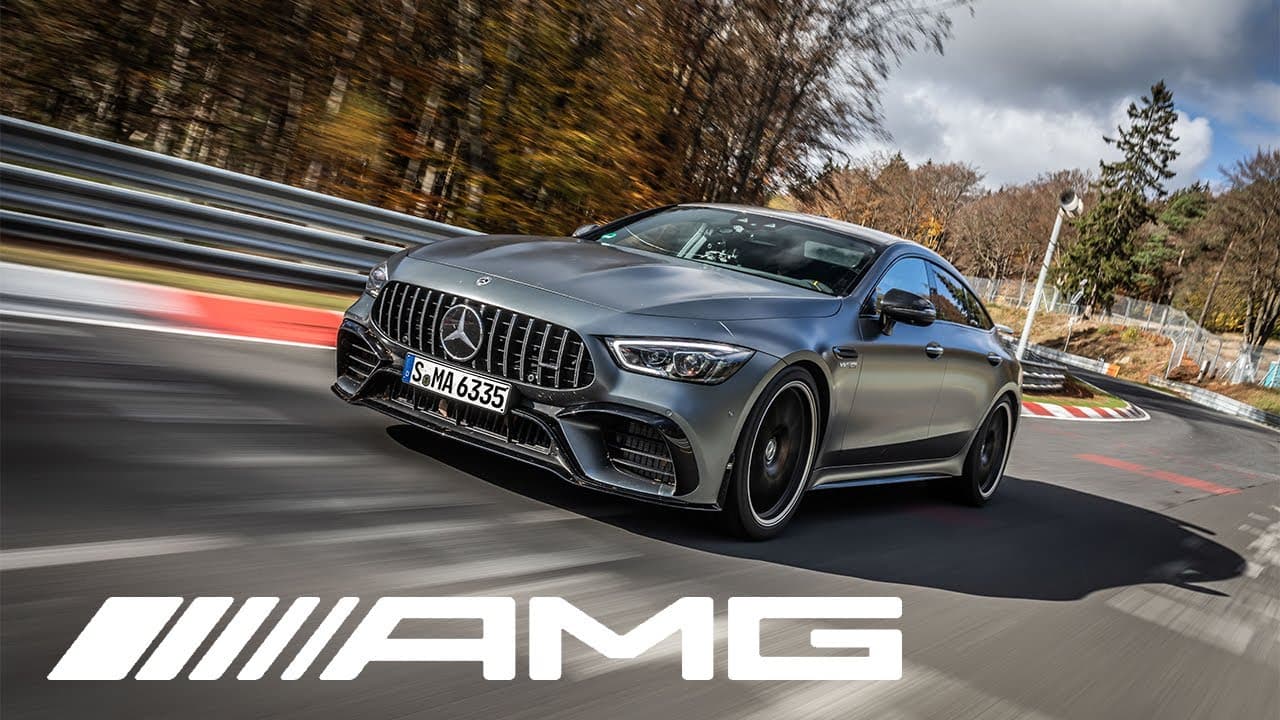
In juxtaposing the Mercedes-AMG GT 63 S with the Lamborghini Huracán STO, we observe a fascinating clash of philosophies. The GT 63 S, with its handcrafted AMG 4.0L V8 BiTurbo engine, generating 630 horsepower and 664 lb-ft of torque, represents a remarkable fusion of luxury, technology, and raw power. Its acceleration from 0 to 60 mph in just 3.1 seconds is testament to its performance credentials, challenging the more track-focused Huracán STO.
The GT 63 S’s practicality as a four-door coupe, combined with its luxurious interior and state-of-the-art technology, positions it uniquely in the realm of high-performance cars. It offers a level of comfort and sophistication that makes it suitable for daily driving, without sacrificing the exhilarating performance expected from the AMG badge. The car’s adaptive suspension, dynamic select modes, and 4MATIC+ all-wheel drive system allow for a tailored driving experience, adaptable to both racetracks and city streets.
The GT 63 S is a product of AMG’s rich heritage in motorsports and high-performance vehicle engineering. This model illustrates how AMG has evolved from a pure performance-oriented brand to one that provides a combination of race-track capability, daily usability, and luxurious comfort. This evolution shows a broader vision for high-performance cars, not limited to track days but extending to enhanced driving experiences in everyday life.
| Specification | Mercedes-AMG GT 63 S |
|---|---|
| Engine | 4.0-liter Twin-Turbo V8 |
| Horsepower | 630 hp |
| Torque | 664 lb-ft |
| Transmission | 9-speed Automatic |
| 0-60 mph | Approx. 3.1 seconds |
| Top Speed | Approx. 196 mph |
| Drivetrain | All-Wheel Drive (4MATIC+) |
| Curb Weight | Around 4,553 lbs |
| Fuel Type | Gasoline |
Tesla Model S Plaid vs. Lamborghini Aventador SVJ

The Tesla Model S Plaid, an astonishing feat of engineering from the American EV maker, presents a formidable challenge to hyper-performance cars like the Lamborghini Aventador SVJ. With its tri-motor setup producing an extraordinary 1,020 horsepower, the Model S Plaid isn’t just about matching its competitors; it’s about setting new benchmarks. Achieving 0 to 60 mph in a scarcely believable 2 seconds, it surpasses many established supercars in acceleration, including the Aventador SVJ.
The Model S Plaid’s performance isn’t its only talking point. Its range of over 390 miles on a single charge and advanced features like autopilot and a 17-inch touchscreen infotainment system make it a trailblazer in integrating performance with technology and convenience. The car’s minimalist interior and focus on digital controls represent a break from traditional car design, aligning more with the ethos of a tech company than a conventional automaker.
Tesla’s impact on the automotive industry extends well beyond the introduction of popular electric cars. With the Model S Plaid, Tesla demonstrates how EV technology can lead to new realms of performance, previously thought the domain of traditional combustion engines. The Model S Plaid not only offers a vision of a sustainable, electric future but also upends conventional wisdom about what electric cars can achieve in terms of performance and driver engagement. Tesla’s relentless focus on innovation and improvement encapsulates a drive towards not just competing with but redefining the standards of the automotive industry.
| Specification | Tesla Model S Plaid |
|---|---|
| Electric Motors | Tri-Motor Setup (Plaid) |
| Total Power Output | 1,020 hp |
| Torque | 1,050 lb-ft |
| Transmission | 1-speed Direct Drive |
| 0-60 mph | Approx. 1.98 seconds |
| Top Speed | Over 200 mph |
| All-Wheel Drive (AWD) | Yes |
| Electric Range (EPA) | Up to 396 miles |
| Battery Capacity | 100 kWh |
| DC Fast Charging | Up to 250 kW |

